- Powerful engine
- Towing Capacity
- Fuel Economy
- Service Intervals
- Not cheap
- Expensive servicing
Ever since the demise of the Australian-made large sedan like the Holden Commodore and Ford Falcon, the Toyota HiLux – and other utes such as the Ford Ranger and Mitsubishi Triton – comfortably picked up where the now-ghosts left off. Despite not being made in Australia, the Toyota HiLux is an Australian icon and for years, it hasn’t been knocked off the Australian sales podium. A recent mid-life facelift enhanced the HiLux’s credentials as a ute, and on paper the 2021 Toyota HiLux Rogue mixes luxury features and off road capability. Does this make it the ultimate HiLux or is it worth looking at other competitors? We find out by testing the 2021 Toyota HiLux Rogue.
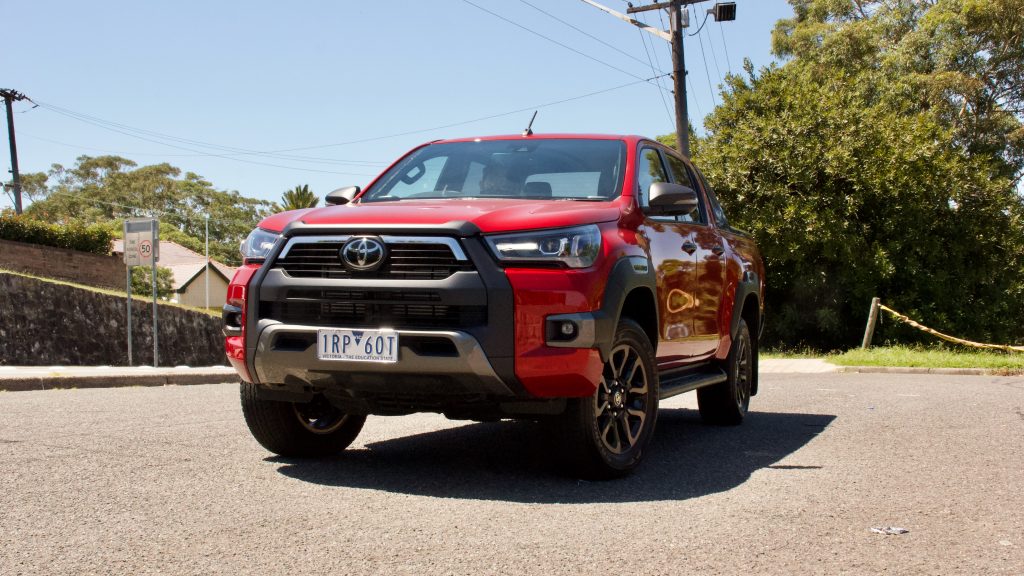
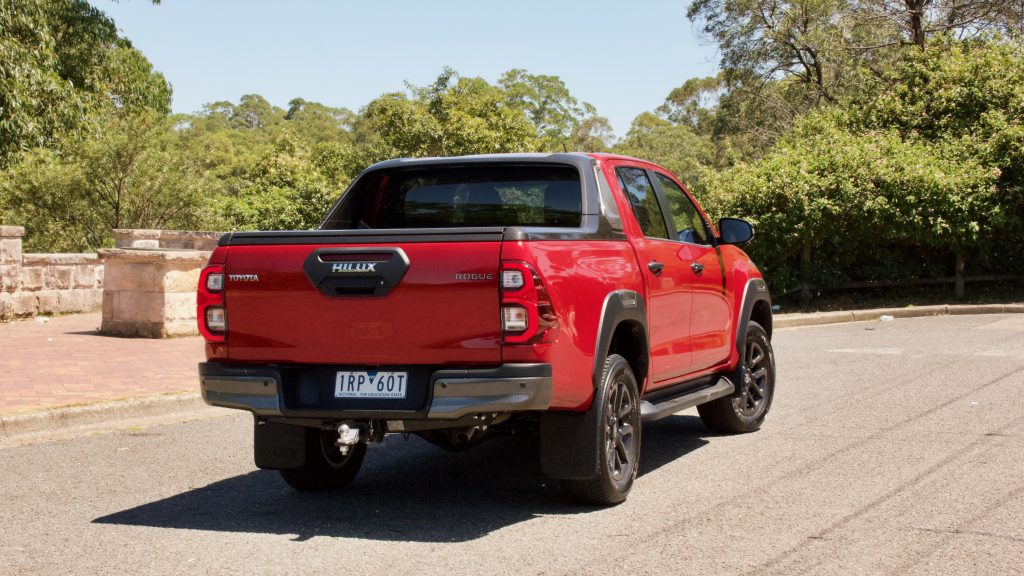
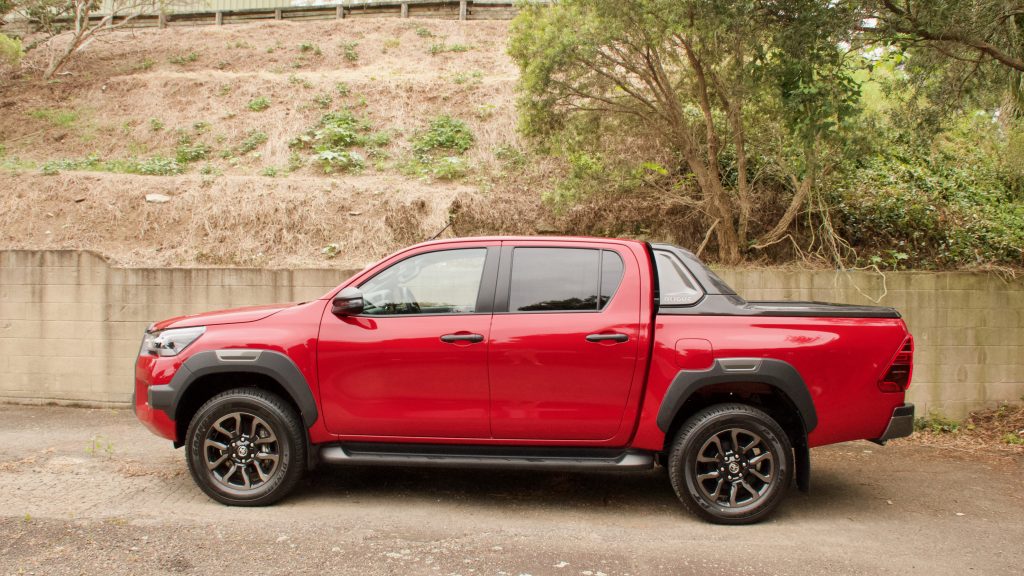
Australians love a dual cab ute and it really shows with the amount of them being released in recent years. With the exception of Hyundai and Kia, nearly every mainstream manufacturer has an offering in this segment. There is also a high demand for ‘premium’ utes such as the Ford Ranger Wildtrak and the Isuzu D-Max X-Terrain, which also offer premium features and excellent off-road capability.
Price & Specs: 7/10
The 2021 Toyota HiLux Rogue is the second from the top model, so it comes with nearly every feature available on a HiLux. The Rogue comes in at $68,990 plus on-road costs (roughly $75,000 drive away) and the only more expensive HiLux is the $69,990 (roughly $76,000 drive away) HiLux Rugged X, which is aimed more at off-roading than the school run. Choosing the Rugged X over the Rogue gives you an LED light bar, rock rails, side mouldings, a heavy duty rear bumper, a front bull bar with a bash plate and front and rear recovery points.
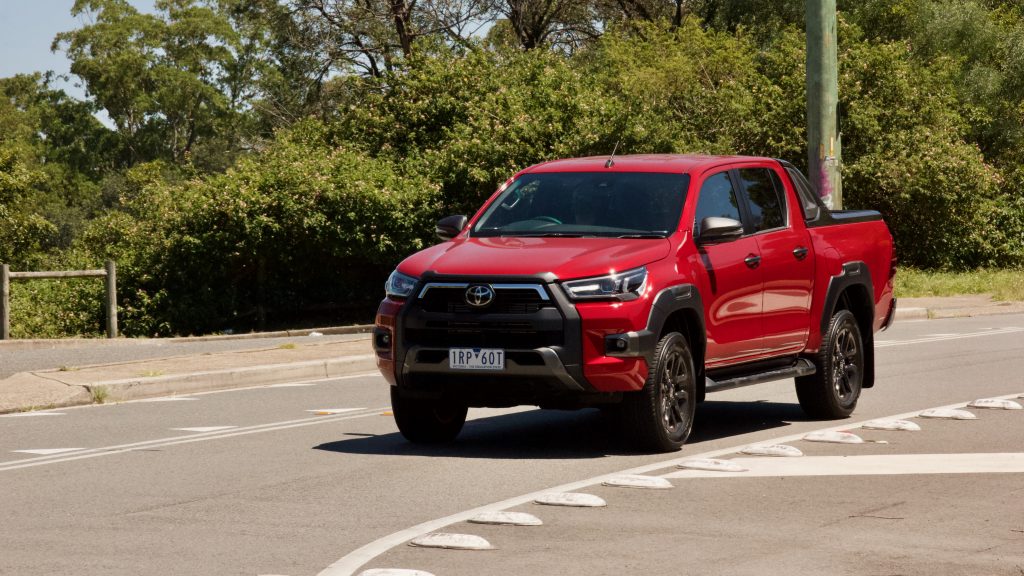
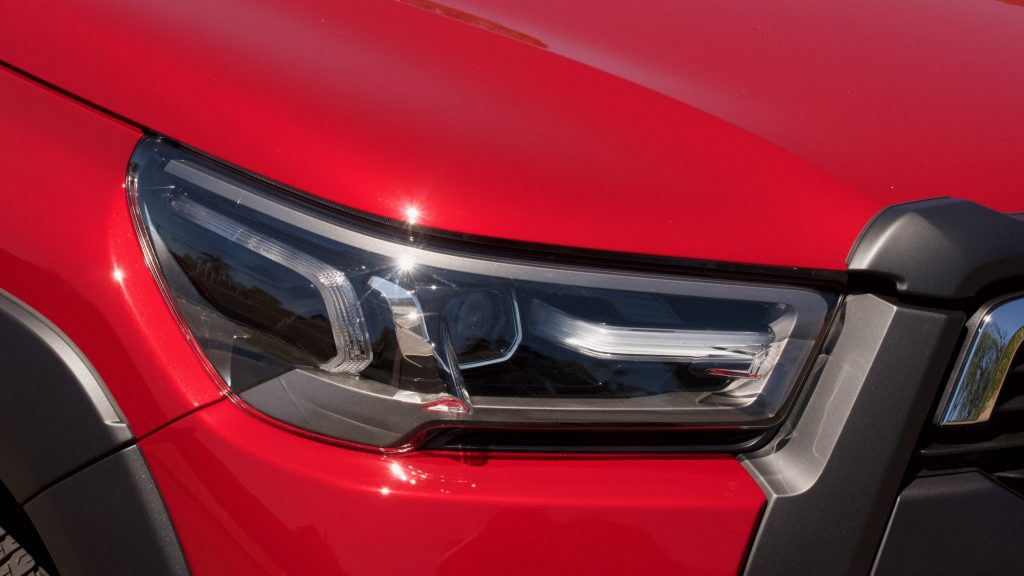
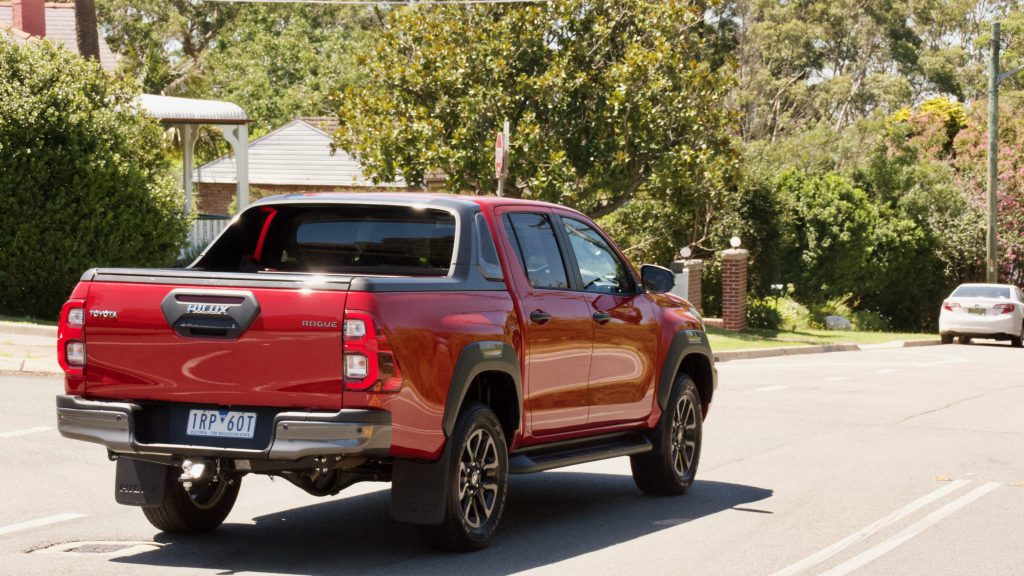
Standard on the 2021 Toyota HiLux Rogue is a nine-speaker JBL sound system, an 8.0-inch colour touchscreen with inbuilt navigation with live traffic reports, wired Apple CarPlay and Android Auto, 18-inch alloy wheels, keyless entry with push button start, automatic LED headlights and auto wipers, leather upholstery, electric-folding mirrors, single-stage heated front seats with an eight-way power adjustable driver’s seat, an auto-dimming rear mirror, a marine-grade carpet-lined tub, a sports bar and an electric tonneau cover.
There are a few features that the 2021 Toyota HiLux Rogue misses out on such as a heads-up display, dual-zone climate control, driver’s seat memory settings, rear charging ports and safety features such as blind-spot monitoring and rear cross-traffic alert.

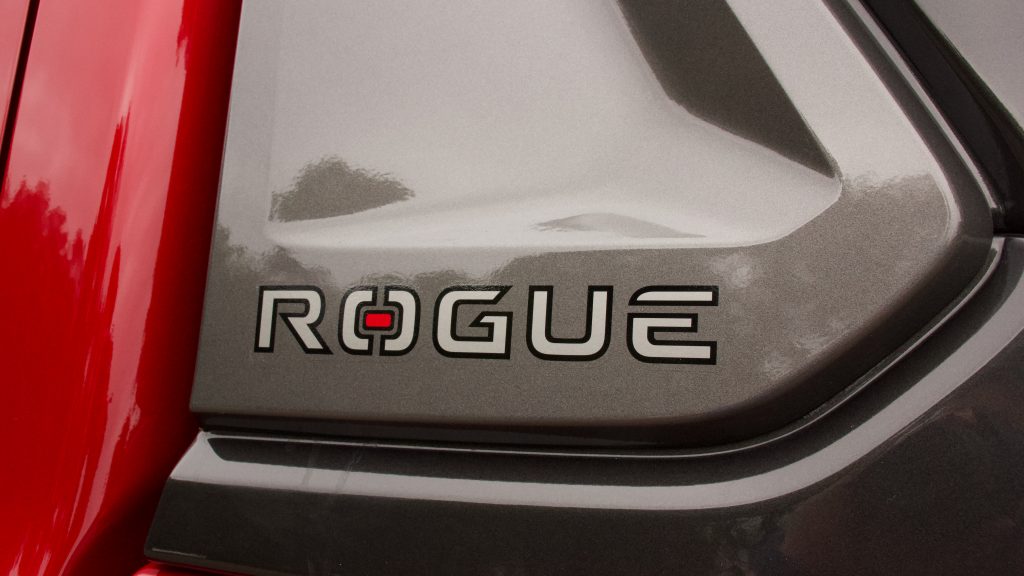
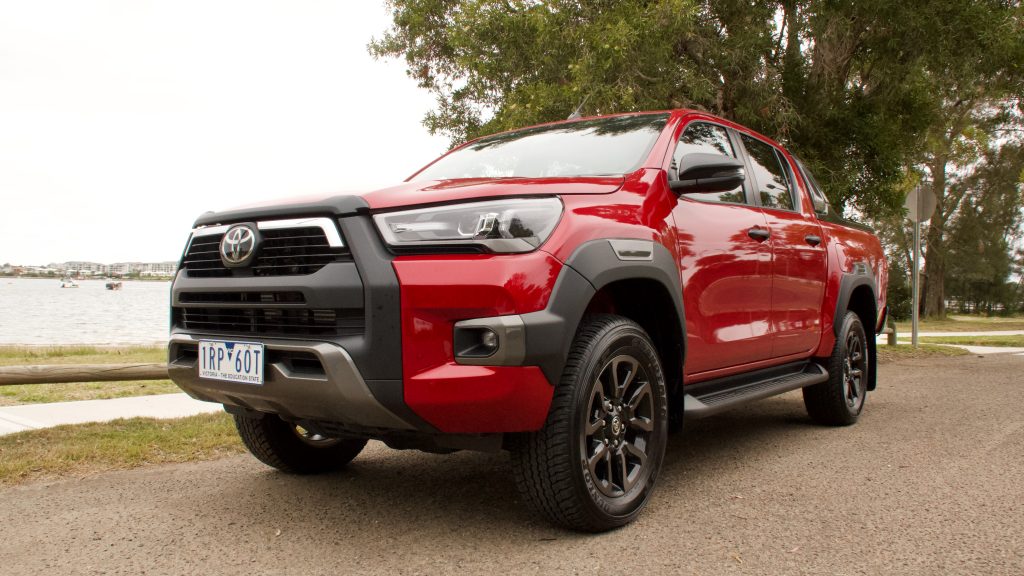
Standard safety kit for the 2021 Toyota HiLux Rogue includes seven airbags, low-speed autonomous emergency braking (AEB) with pedestrian and cyclist detection, trailer sway control, an alarm, front and rear parking sensors with a reversing camera, lane departure warning with lane keep assist, adaptive cruise control, traffic sign recognition, seven airbags and ISOFIX points in the outboard rear seats – though auto high beam, blind-spot monitoring and rear cross-traffic are features that the D-Max X-Terrain features over the HiLux.
The only standard colour on offer with the HiLux is ‘Glacier White’ – every other colour comes at a $675 premium such as ‘Eclipse Black’, ‘Nebula Blue’, ‘Saturn Blue’, ‘Oxide Bronze’, ‘Graphite’, ‘Silky Sky’, ‘Crystal Pearl’ and our test car’s ‘Feverish Red’.
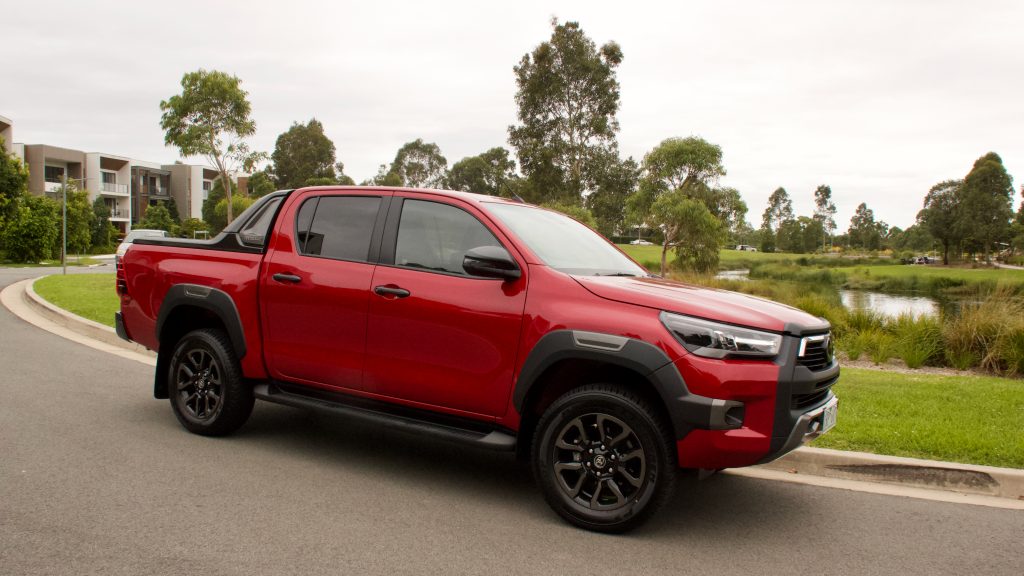
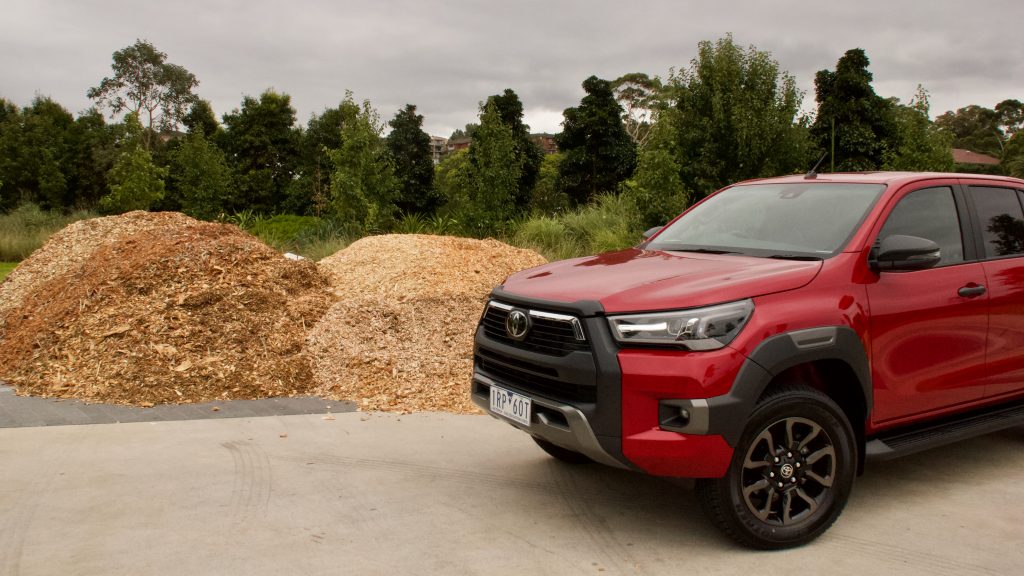
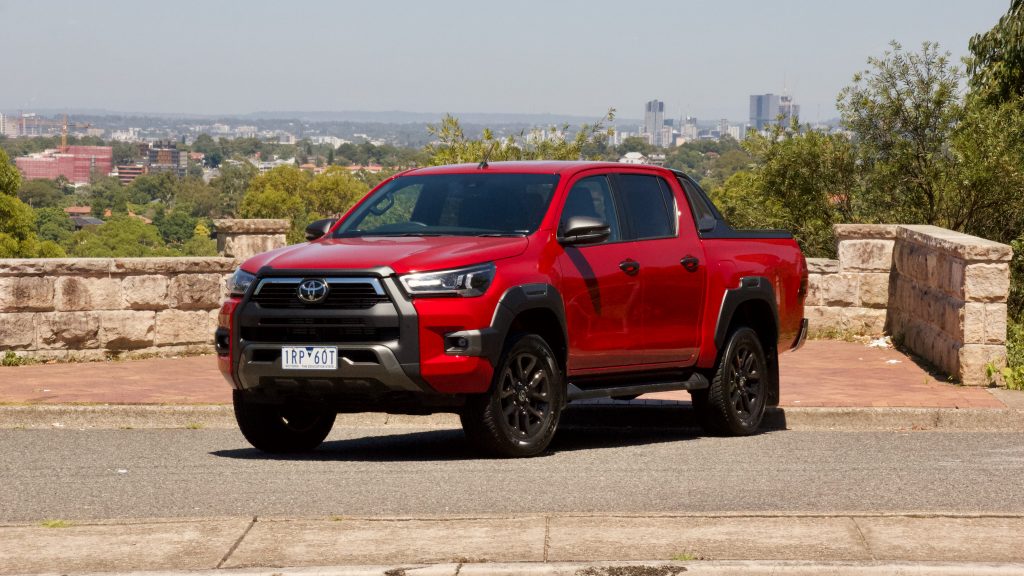
In terms of competitor’s spec levels the Ford Ranger Wildtrak comes with a more sophisticated driver’s display, a heated windscreen, dual-zone climate control, a heated steering wheel and start stop tech and as a bonus, the equivalent Ranger Wildtrak (3.2-litre Automatic) is priced at $64,590 or $4,400 less than the HiLux.
Performance & Economy: 8/10
The 2021 Toyota HiLux Rogue comes with the familiar 2.8-litre turbocharged diesel four-cylinder engine seen in the HiLux previously, although for the 2020 model year, it was upgraded to be a more powerful and yet, also more fuel efficient. The current tune for the engine produces 150kW of power and 500Nm of torque, which is more than adequate for the HiLux. For comparison the Ranger Wildtrak’s standard 3.2-litre turbocharged five-cylinder diesel engine comes with 147kW of power and 470Nm of torque, which is 3kW and 30Nm short of the HiLux.
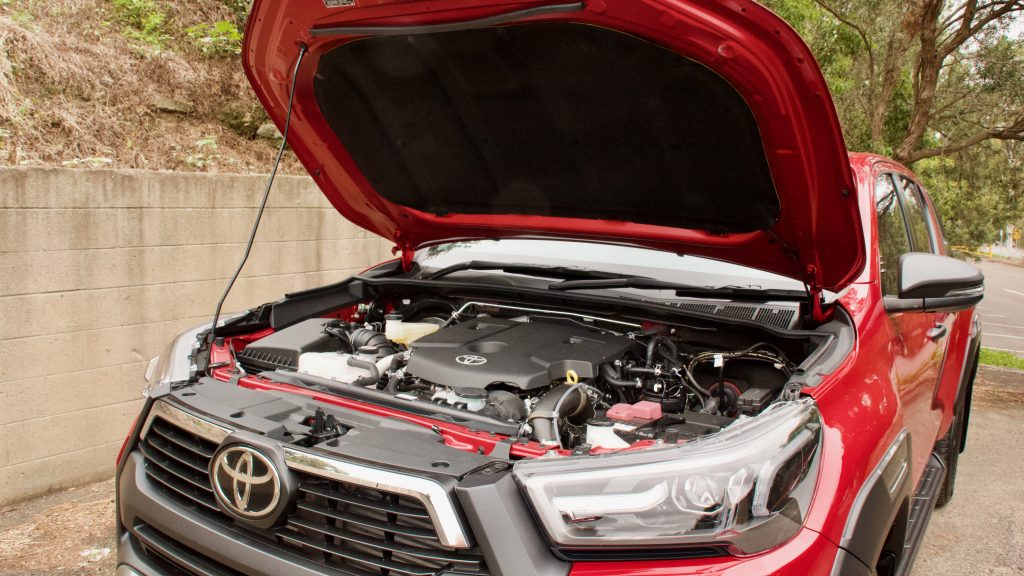
The standard and only gearbox option for the 2021 Toyota HiLux Rogue is a six-speed automatic – the six-speed manual transmission offered in other HiLux models can unfortunately not be had with the Rogue. The transmission is fine, but it’s definitely lazier than the Ranger’s auto – let alone the 10-speed unit in the optional 2.0L bi-turbo diesel.
Toyota’s claimed average fuel consumption for the 2021 Toyota HiLux Rogue comes in at 8.4L/100km, which is less than the 8.9L/100km that the Ford Ranger Wildtrak 3.2L. We tested the HiLux with a mixture of highway and city conditions and we returned a reading of 9.3L/100km, which is close to the claimed figure.
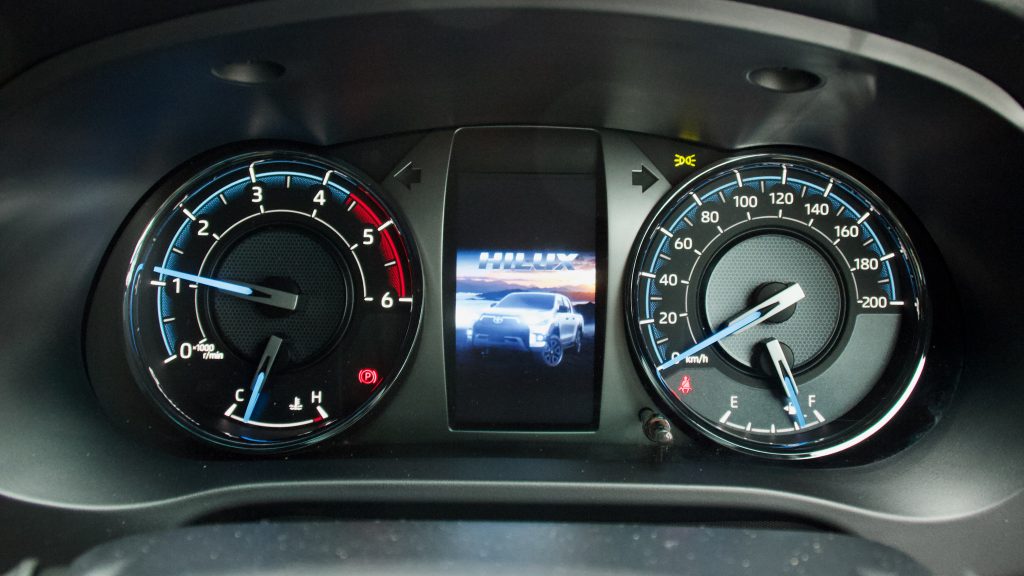
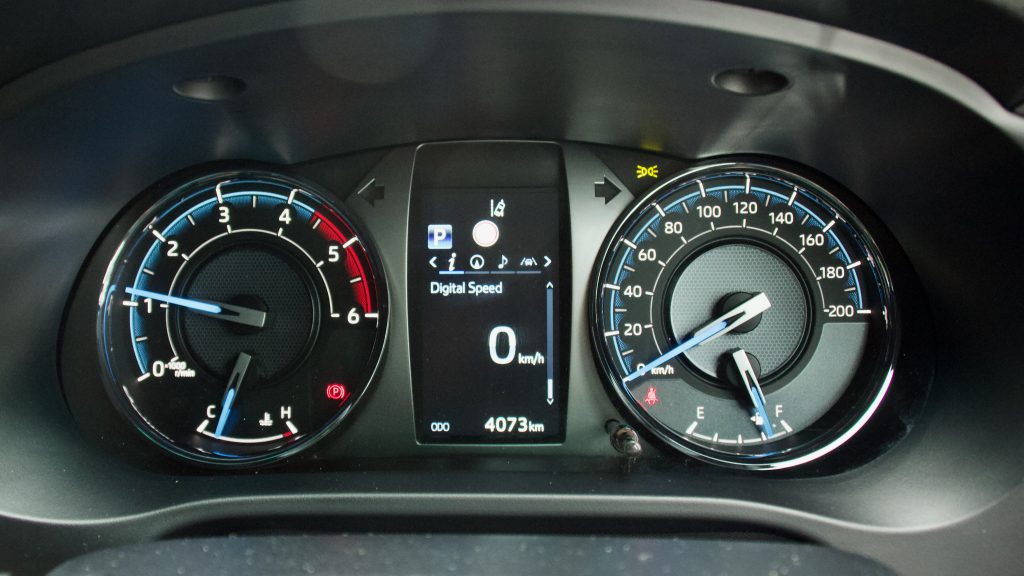
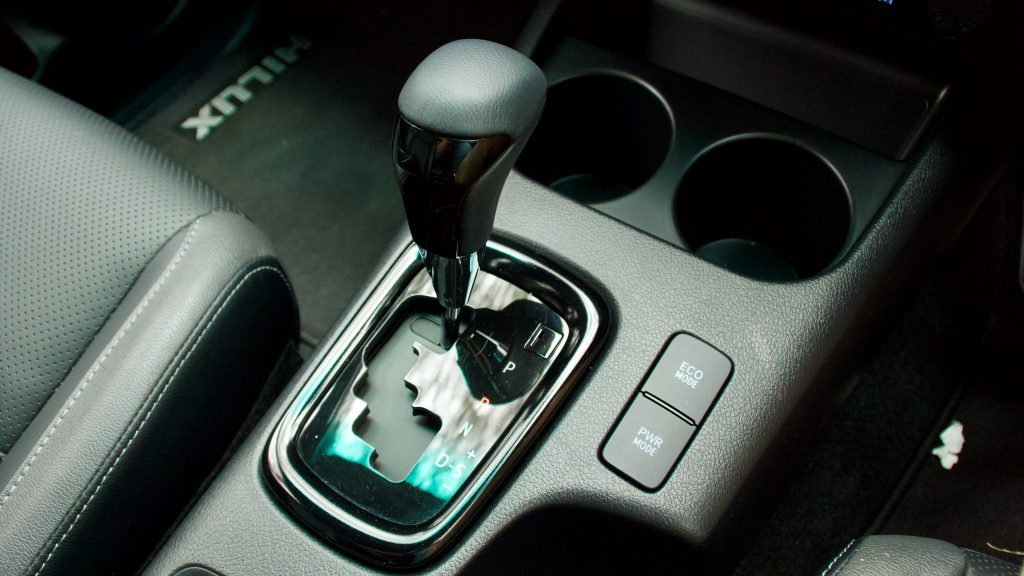
The engine in the 2021 Toyota HiLux Rogue can be a little vocal when accelerating but when settled or just pootling around town you don’t notice the engine noise as much. The highway manners have improved over the previous HiLux – there is now a solid feeling that the HiLux was missing, though the Australian-developed Ranger definitely feels more car like from behind the wheel.
The braked towing capacity of the 2021 Toyota HiLux Rogue is 3,500kg, which is on par with what is offered by competitors. The only other model that can tow more than the HiLux are the Chevrolet Silverado and RAM 1500 with a braked towing capacity of 4,500kg although both of these cars are significantly more expensive than the HiLux (the Silverado starts at $114,900 and 1500 starts $79,950).
Ride & Handling: 7/10
The HiLux now has slightly softer rear suspension making the ride much more bearable than the previous model. The jarring of the rear over speed humps and driveways has now gone, although this is not to say the HiLux rides fantastically. There is still room for improvement, this is not to say that the 2021 Toyota HiLux is uncomfortable by any means. It is actually not too bad to live with when out on the open road. The Ford Ranger, however, does ride better.
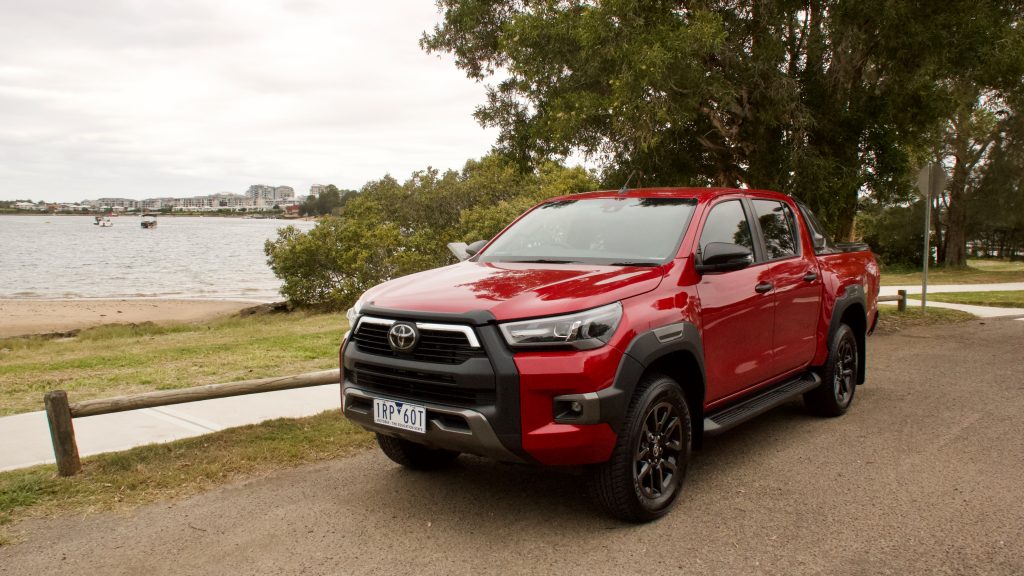
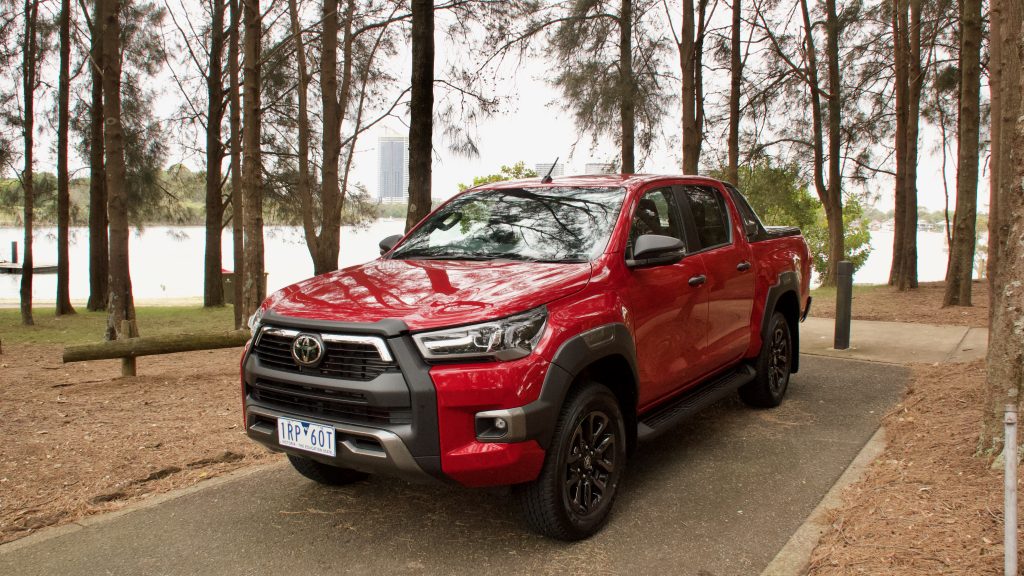
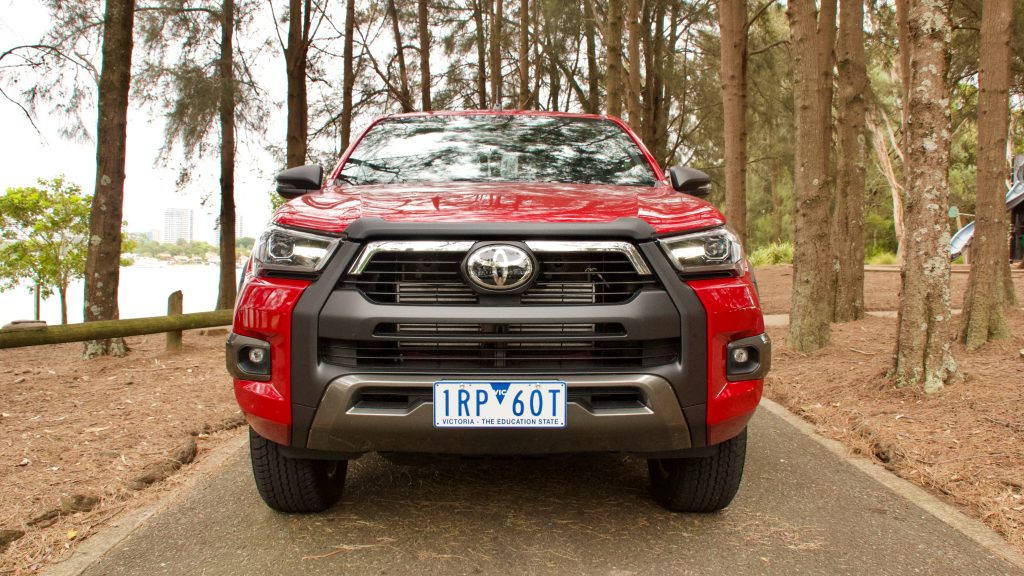
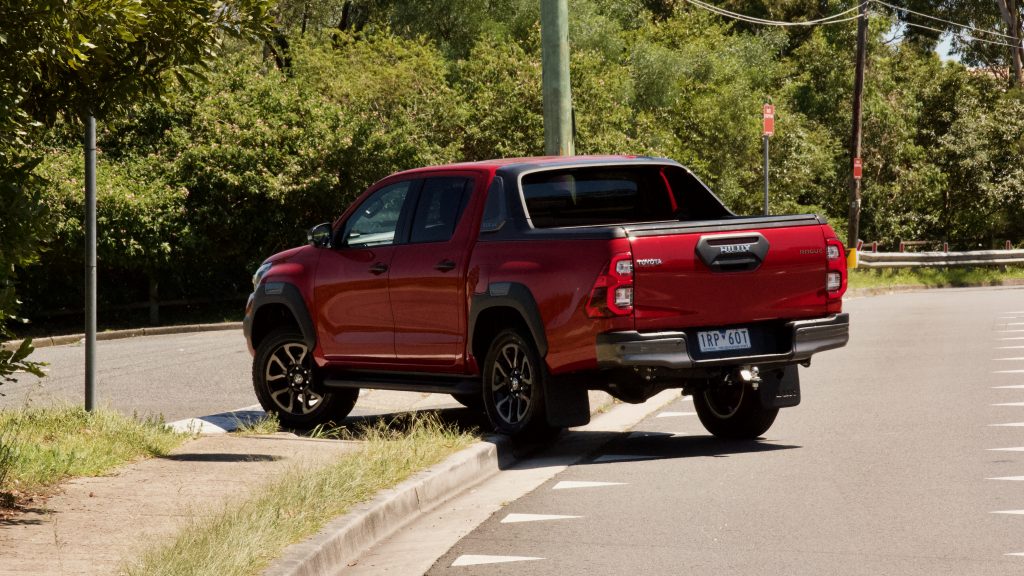
The lane keep assist in the HiLux isn’t too intrusive and the adaptive cruise control also works a treat by maintaining a safe distance from the car ahead, although when changing lanes to overtake, the system could react a little faster to increase the speed and safely get around the car in front. The addition of blind-spot monitoring and rear cross-traffic alert would make driving the HiLux through suburbia a little easier.
Handling has never been the HiLux’s strong suite as the high centre of gravity created quite a lot of body roll. In the 2021 Toyota HiLux Rogue this is still evident but not as much as the HiLux it replaces. Taking corners at speed can be a little scary or unnerving if you have never experienced a big ute before.
Interior & Practicality: 8/10
The HiLux has had the same interior since this generation was revealed in 2015, but that’s not a bad thing. Everything is laid out where you would expect it to be, the dials are simple and easy to read and there is a decent amount of storage. There are good sized storage bins, two gloveboxes, a nicely-sized centre console and even storage in the rear doors as well.
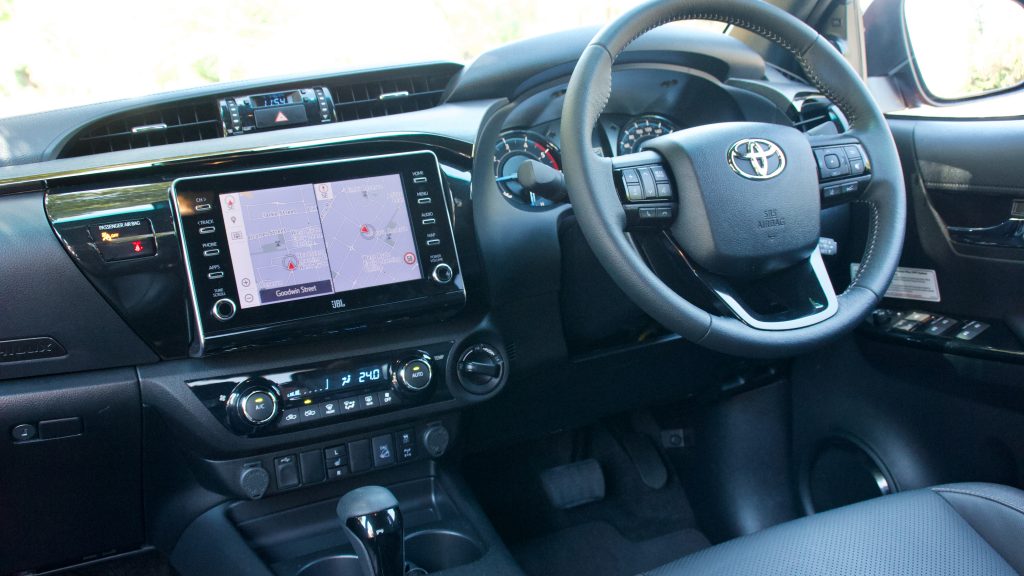
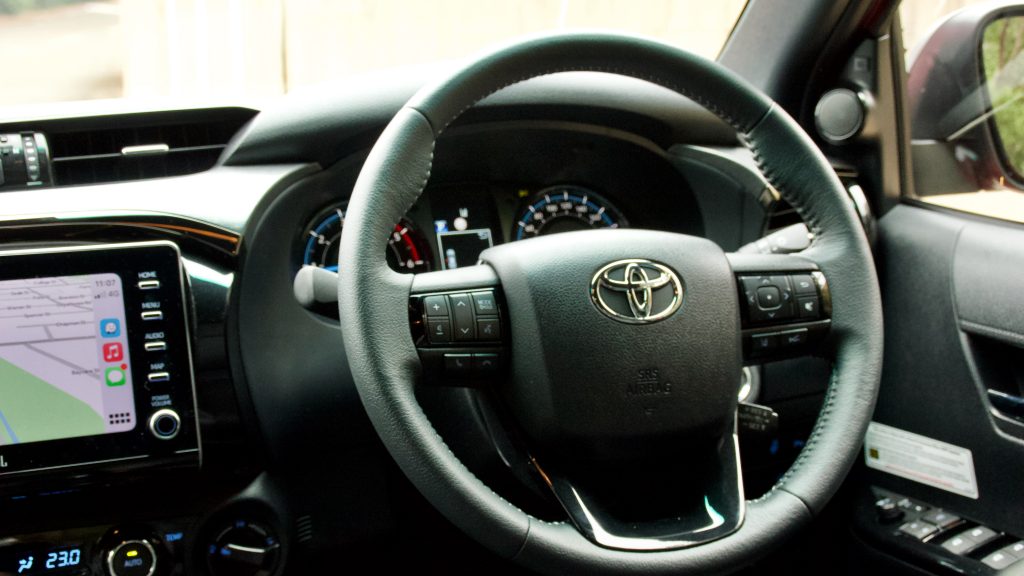
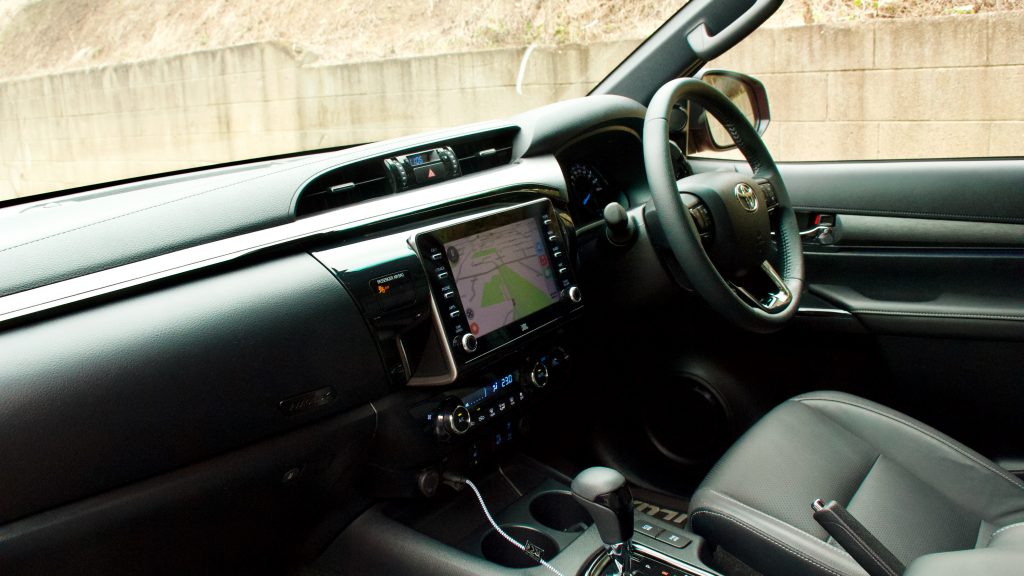
The quality of the leather on the seats is great, though the rest of the cabin is covered in hard plastics – and the fake stitching on the dashboard is particularly naff. The Ford Ranger and Isuzu D-Max/Mazda BT-50 twins do have a better quality interior, though the HiLux is definitely better quality than something like a Mitsubishi Triton. Is it worth the big price premium over a Triton though? We’re not sure.
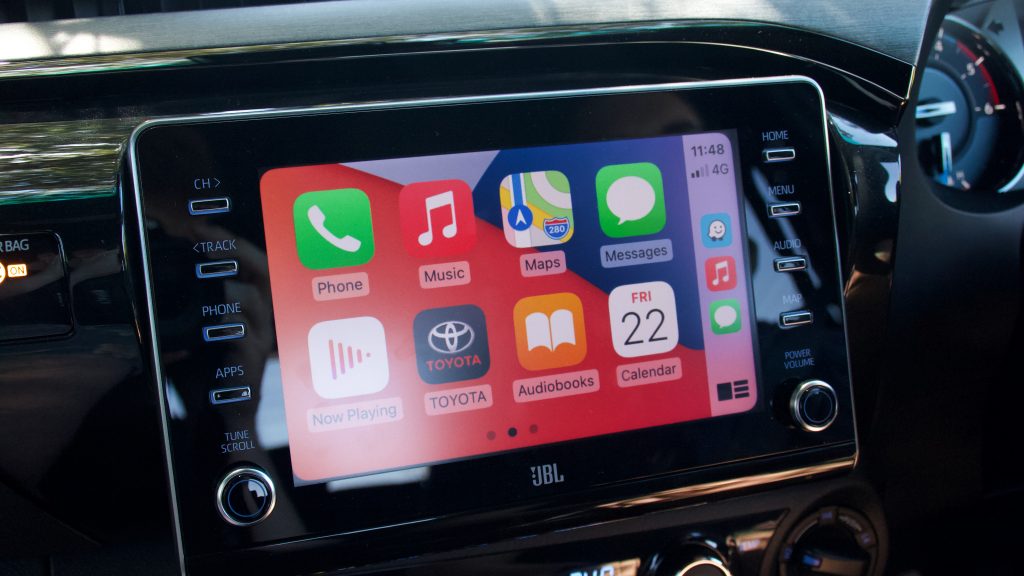
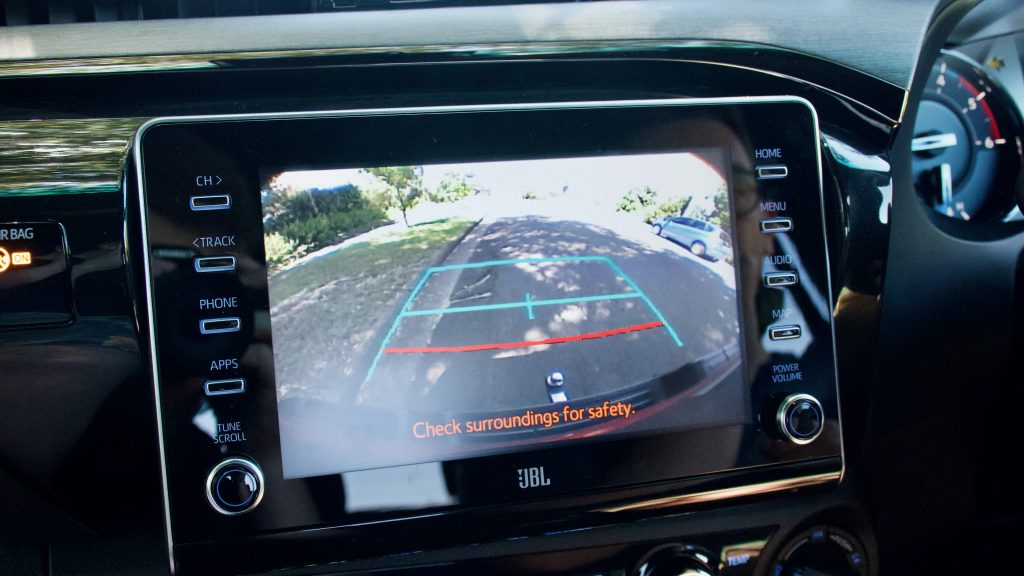
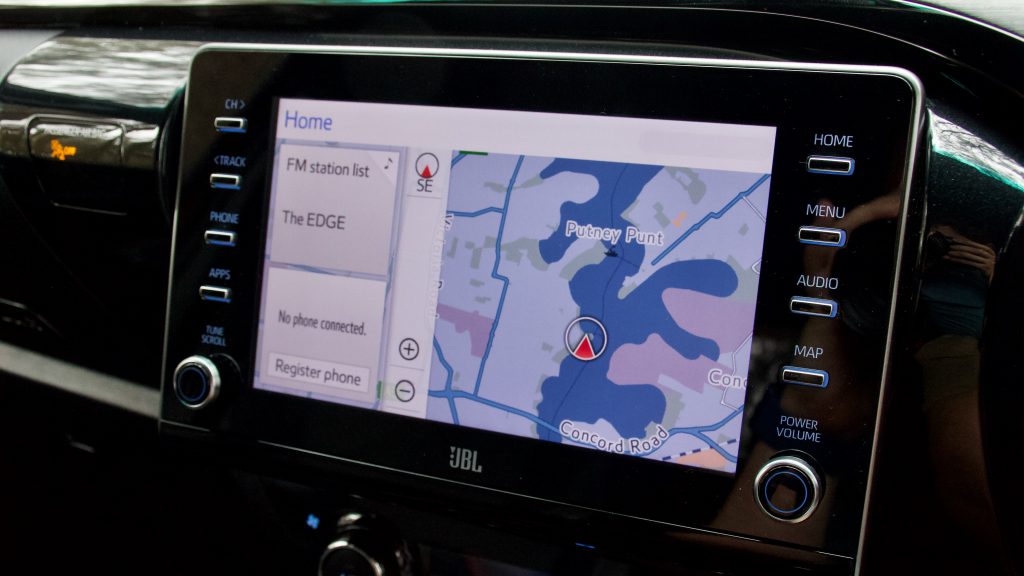
The 8.0-inch touchscreen and infotainment system offers good quality and has shortcut keys either side of the screen to make navigating between menus easy. The system itself is a little dated and can sometimes lag and it’s not as responsive as we would like it to be. This screen and infotainment system is used in quite a few Toyota products and while the Apple CarPlay and Android Auto look good and work well, the reversing camera quality could be a lot better.
The rear seats in the HiLux can be a little cramped, especially if you’re taller. Headroom is fine, though leg- and kneeroom can be tight, even for shorter passengers. There are rear air conditioning vents though, and two bag hooks, but no device charging. The seats do fold in case you need to store more.
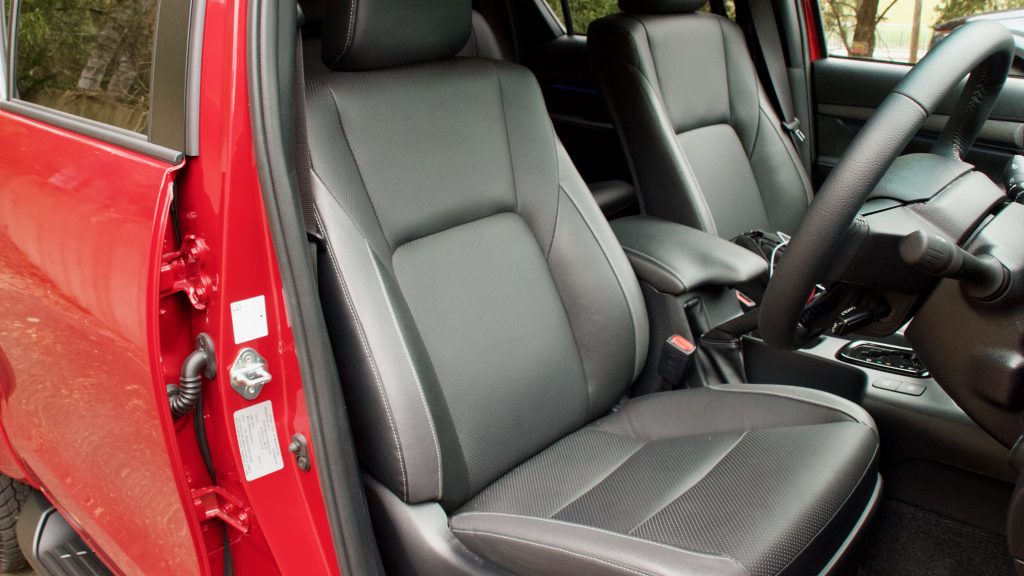
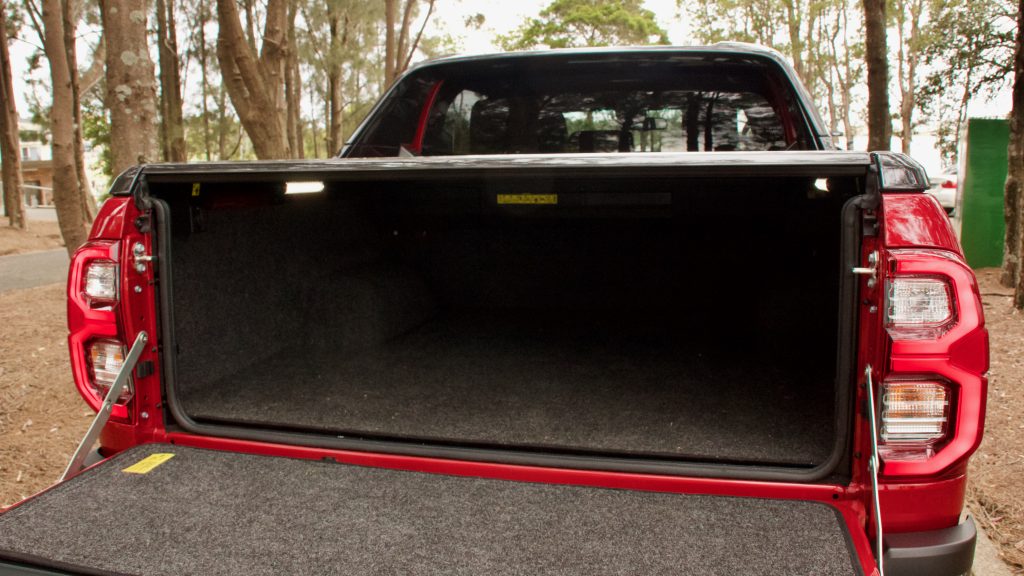
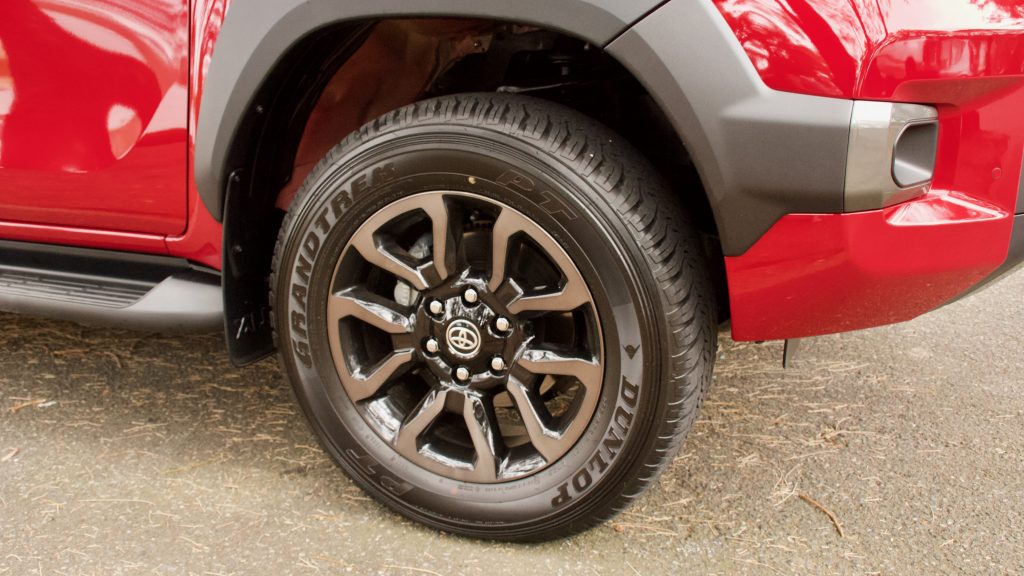
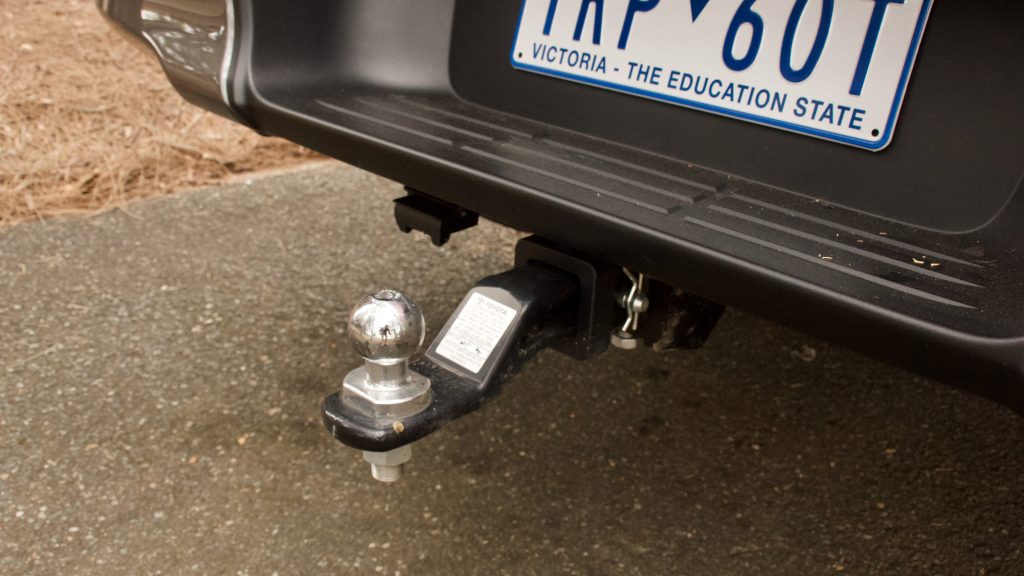
The tray of the 2021 Toyota HiLux Rogue is feature packed with a power rolling tonneau cover, a marine grade carpet tray liner, tie down points and lights. The tray measures in at 1,560mm in length and 1,520mm wide (1,000mm between the arches) making it slightly larger than the Ford Ranger and Isuzu D-Max.
Service & Warranty: 7.0/10
The 2021 Toyota HiLux comes with the brand’s five-year unlimited kilometre warranty with an extra two years for the engine, which is only beaten by the Isuzu D-Max’s six-year/150,000km warranty. Unfortunately, like all other Toyota products, the HiLux does not come with any form of roadside assistance.
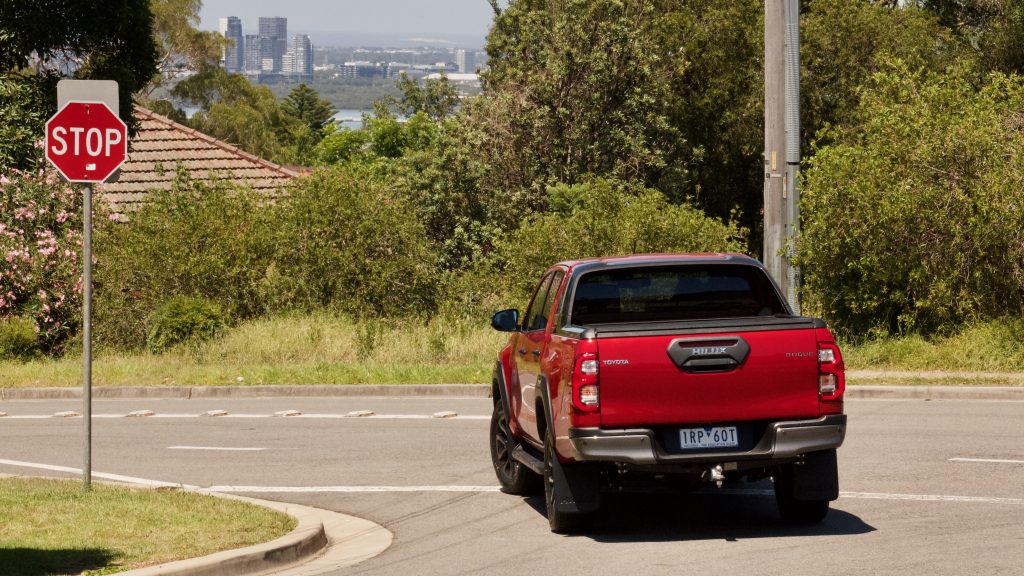

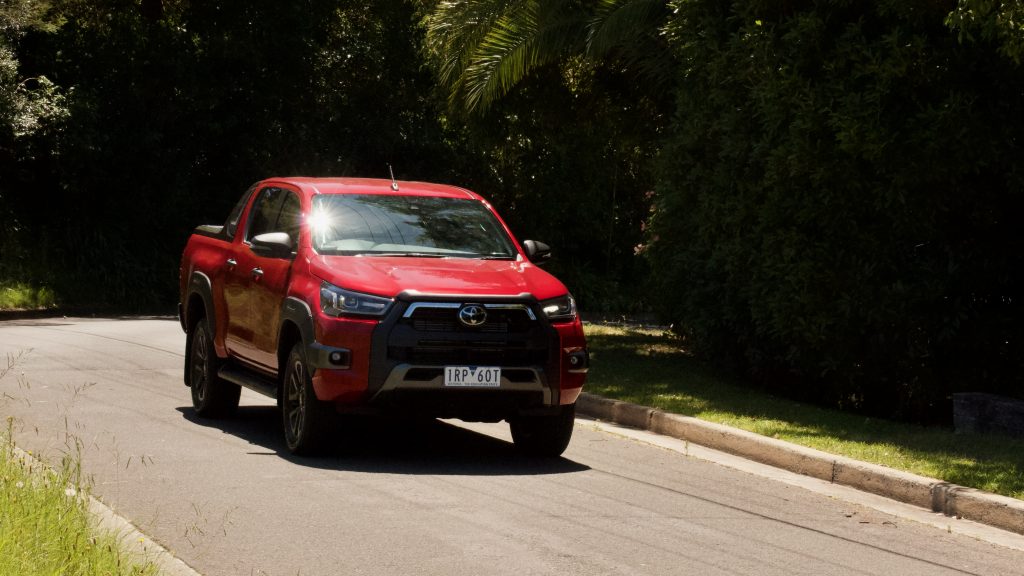
The HiLux needs servicing every six-months or 10,000km, which is sub-par compared to the 12 month/15,000km service intervals that the Ford Ranger gets. The cost of servicing the 2021 Toyota HiLux Rogue over three years or 60,000km is $1,500 which is $603 more expensive than it would cost to service a Ford Ranger.
2021 Toyota HiLux Rogue DiscoverAuto Rating: 7.4/10
The Toyota HiLux is a bit of a staple in Australia for being dependable and a great workhorse. The 2021 Toyota HiLux Rogue does live up to this reputation, but it is also a bit more expensive than most other utes and much more expensive to service. This isn’t to say you should completely discount it from your shortlist as it does have some redeeming features like a good towing capacity, a good amount of – recently upgraded – grunt and decent fuel economy.
Would we buy the 2021 Toyota HiLux Rogue over the competition? We would definitely consider it alongside the Ford Ranger Wildtrak and the Isuzu D-Max X-Terrain. All three are great options that will handle whatever you throw at them – but the Isuzu is significantly better value for money, and the Ranger is definitely more car-like to drive.
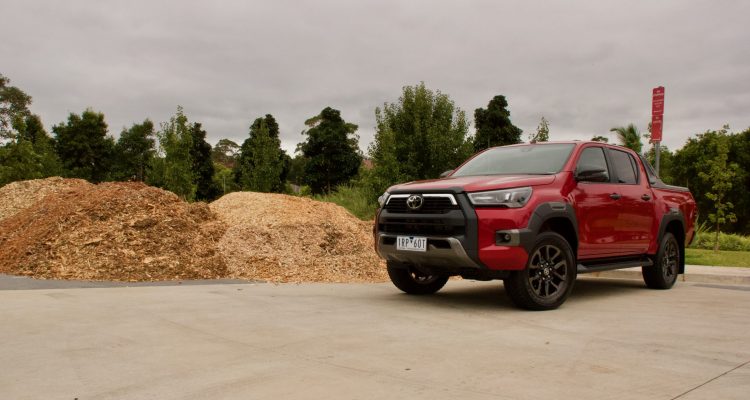
Leave a Reply